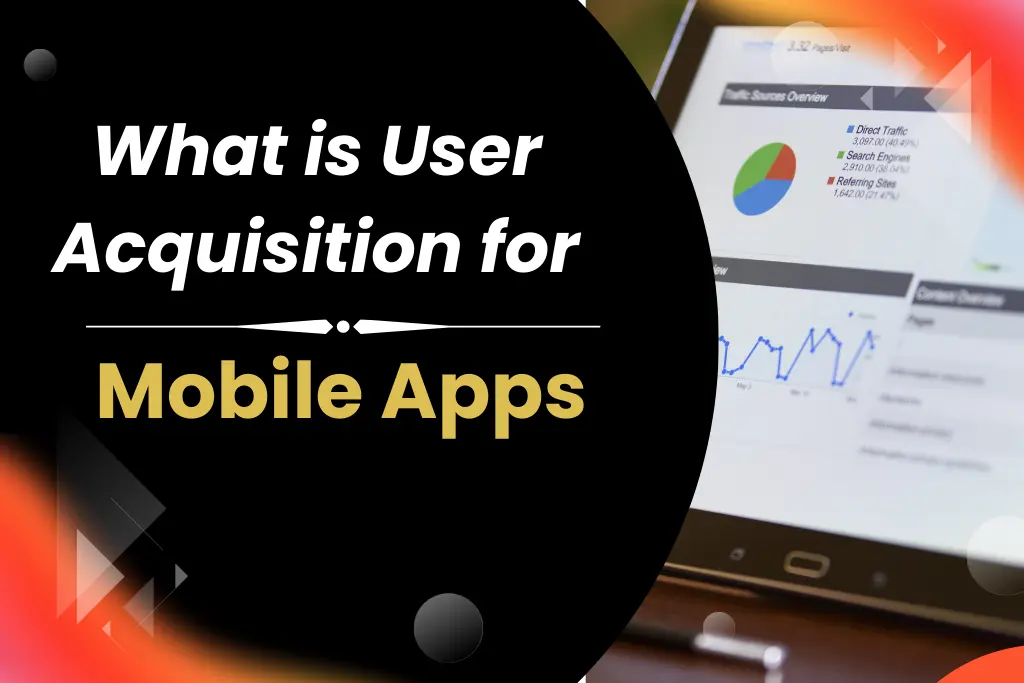The Ultimate Guide to User Acquisition for Mobile Apps
 In today’s dynamic world of mobile apps, user acquisition holds immense significance in shaping the destiny of an app. With millions of apps flooding the app stores, it becomes vital to distinguish your mobile app from the competition and entice users. This necessitates the implementation of a meticulously devised user acquisition strategy. Within this all-inclusive guide, we shall delve into the realm of user acquisition for mobile apps, comprehending its significance, and uncovering effective strategies to successfully acquire and retain users.
In today’s dynamic world of mobile apps, user acquisition holds immense significance in shaping the destiny of an app. With millions of apps flooding the app stores, it becomes vital to distinguish your mobile app from the competition and entice users. This necessitates the implementation of a meticulously devised user acquisition strategy. Within this all-inclusive guide, we shall delve into the realm of user acquisition for mobile apps, comprehending its significance, and uncovering effective strategies to successfully acquire and retain users.
1. Understanding User Acquisition:
User acquisition entails the process of acquiring fresh users for a mobile app. It encompasses diverse marketing endeavors that aim to captivate potential users, convert them into active users, and nurture their loyalty over time. The ultimate objective revolves around boosting app downloads, enhancing user engagement, and generating revenue.
2. The Importance of User Acquisition:
Mobile app success is most important and depends on user acquisition due to the following reasons:
a. Increased App Visibility:
In a vast sea of apps available in app stores, implementing a well-executed user acquisition strategy enables your app to differentiate itself from the competition, thereby enhancing its visibility and discoverability.
b. Higher App Downloads:
Acquiring users effectively leads to increased app downloads, which is a key metric for app success. More downloads translate to more potential users, revenue opportunities, and market presence.
c. Improved App Retention:
User acquisition is not just about attracting users; it’s also about retaining them. Engaging and retaining users over time boosts app longevity, increases user lifetime value (LTV), and enhances overall user satisfaction.
d. Revenue Generation:
User acquisition directly impacts revenue generation. More users mean a larger user base to monetize through in-app purchases, subscriptions, advertisements, or other revenue streams.
3. User Acquisition Strategies:
To effectively acquire users for your mobile app, consider implementing the following strategies:
a. Define Target Audience:
Identify your app’s target audience based on demographics, interests, behavior patterns, and needs. This understanding helps tailor your marketing efforts to reach the right users.
b. App Store Optimization (ASO):
Optimize your app store listing through App Store Optimization to improve visibility and ranking in search results. Use relevant keywords, compelling app descriptions, engaging visuals, and positive user reviews to attract potential users.
c. Paid Advertising:
Leverage paid advertising channels such as social media ads, search ads, google ads, or display ads to reach a wider audience. Set clear objectives, define target demographics, and optimize your ad campaigns to maximize conversions.
d. Influencer Marketing:
Collaborate with influencers in your app’s niche or industry to promote your app to their followers. Their recommendations and endorsements can significantly boost app visibility and credibility.
e. App Store Feature:
Aim to get your app featured on the app stores’ curated lists or “Editor’s Choice” sections. Being showcased in these prominent positions increases visibility and attracts organic downloads.
f. Content Marketing:
Create valuable and informative content related to your app’s niche. Publish blog posts, guest articles, videos, or podcasts to establish thought leadership and drive organic traffic to your app.
g. Social Media Engagement:
Actively engage with your target audience on social media platforms. Share relevant content, run contests, encourage user-generated content, and provide prompt customer support to build a community around your app.
h. Referral Programs:
Implement referral programs that incentivize existing users to invite their friends to download and use your app. Rewards or exclusive benefits encourage users to share your app, leading to organic user acquisition.
i. App Analytics and Optimization:
Continuously track user acquisition metrics using analytics tools. Monitor user behavior, conversion rates, and other key performance indicators (KPIs) to identify areas for improvement and optimize your user acquisition efforts.
j. A/B Testing:
Conduct A/B tests to experiment with different app store creatives, ad copy, landing pages, or user onboarding flows. By testing and optimizing these elements, you can enhance user acquisition and conversion rates.
k. Email Marketing:
Build an email list of interested users and engage them through targeted email marketing campaigns. Send personalized emails with app updates, new feature releases, exclusive offers, and relevant content to nurture and retain users.
l. App Partnerships:
Collaborate with other apps or brands in complementary niches to cross-promote each other’s apps. This can help expand your reach, tap into new user bases, and increase app downloads.
m. App Store Ratings and Reviews:
Encourage satisfied users to leave positive ratings and reviews on the app stores. Higher ratings and positive reviews improve app credibility, increase user trust, and positively impact user acquisition.
n. Localization:
If your app has a global target audience, consider localizing your app content, descriptions, and marketing campaigns. By tailoring your app to different languages and cultural preferences, you can attract users from various regions.
o. App Store Paid Promotion:
Explore paid promotion opportunities within the app stores themselves. Some platforms offer promotional spaces or advertising options to boost your app’s visibility to a larger audience.
p. Continuous Optimization:
User acquisition strategies should not be set in stone. Regularly analyze your efforts, measure performance, and adapt your strategies based on the insights gained.
It is essential to remember that user acquisition is just the starting point. After successfully acquiring users, it becomes critical to concentrate on engaging and retaining them. This can be accomplished by offering a smooth and seamless user experience, providing regular updates and improvements, actively listening to user feedback, and consistently delivering value to ensure their long-term contentment.
To conclude, user acquisition for mobile apps is a complex endeavor that demands a strategic mindset and ongoing dedication. By employing a blend of successful user acquisition strategies, you can allure a specific user base, enhance app downloads, and cultivate user loyalty. It is essential to maintain a proactive approach, adapt to industry trends, and leverage data-driven insights to optimize your user acquisition efforts and position your mobile app for success in the fiercely competitive app market. Remember that acquiring users is merely the beginning of your journey. To effectively retain and monetize your user base, it is crucial to constantly enhance your app and provide an outstanding user experience.
Do you Want
More App Downloads?
Boost the Mobile App Growth with the Ultimate Mobile App Marketing Experts
Latest Blogs
Do you Want
More App Downloads?
Boost the Mobile App Growth with the Ultimate Mobile App Marketing Experts
User acquisition is the process of attracting and gaining new users for a mobile app. It involves various marketing strategies and channels to increase app downloads, installations, and user engagement.
User acquisition is crucial for the success of mobile apps as it helps build a user base, increase brand visibility, and drive revenue. Without effective user acquisition, even the most innovative apps may struggle to gain traction in a competitive market.
Start by analyzing your app’s value proposition and identifying the demographics, interests, and behavior patterns of potential users. Conduct market research and use analytics tools to refine your understanding of your target audience.
ASO is crucial for improving the visibility of your app on app stores. Optimizing metadata, including the title, description, keywords, and visuals, enhances your app’s chances of being discovered by users searching for relevant content.
Social media platforms offer a powerful channel for creating awareness and engaging with potential users. Develop a strong social media presence, share engaging content, run targeted ads, and build a community around your app to encourage organic growth.
Influencer marketing involves collaborating with individuals who have a significant following in your app’s niche. Influencers can help increase credibility, reach a wider audience, and drive downloads through their recommendations and reviews.
Key metrics include conversion rates, cost per acquisition (CPA), retention rates, and user engagement. Regularly analyze these metrics to assess the effectiveness of your strategies and make data-driven decisions for optimization.
Paid advertising can significantly boost user acquisition efforts by reaching a larger audience quickly. However, the necessity depends on your budget, target audience, and overall marketing strategy. It’s often beneficial to incorporate a mix of organic and paid channels.




